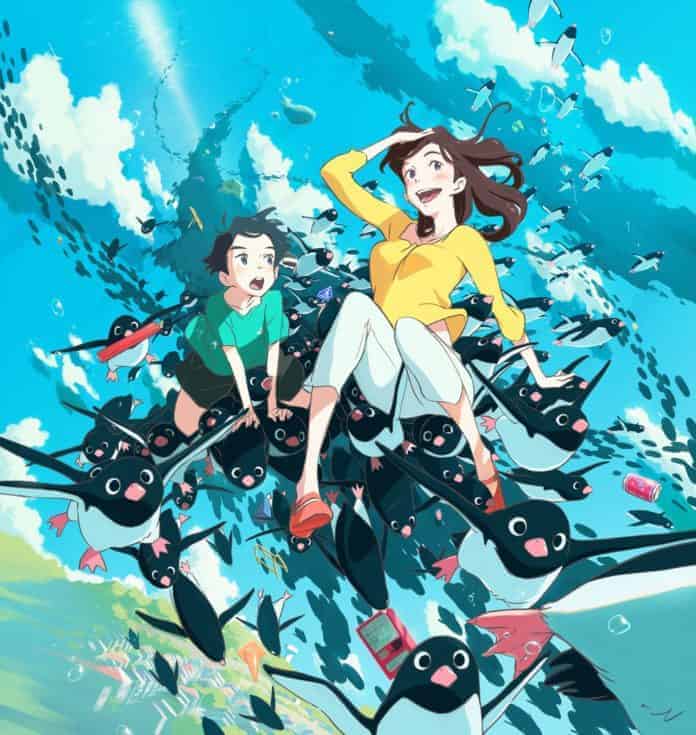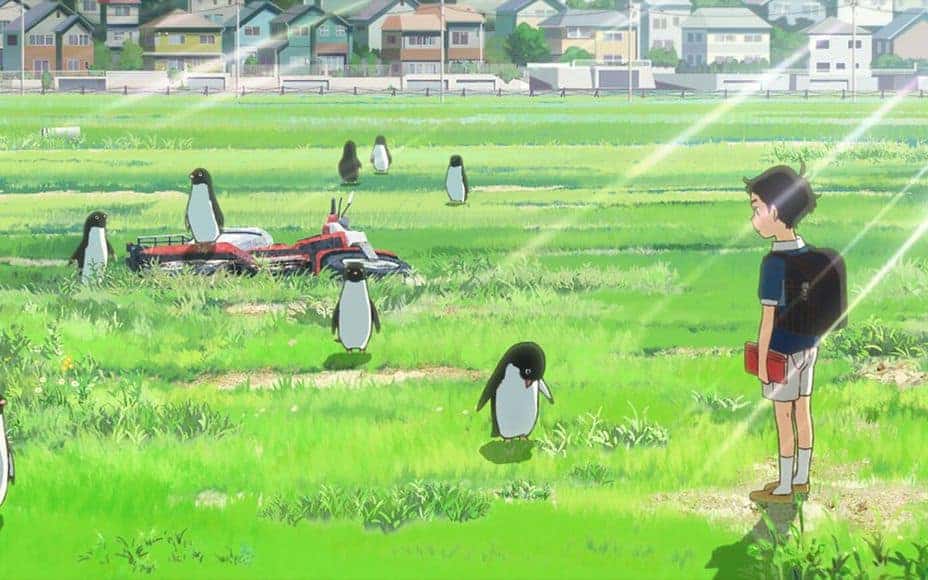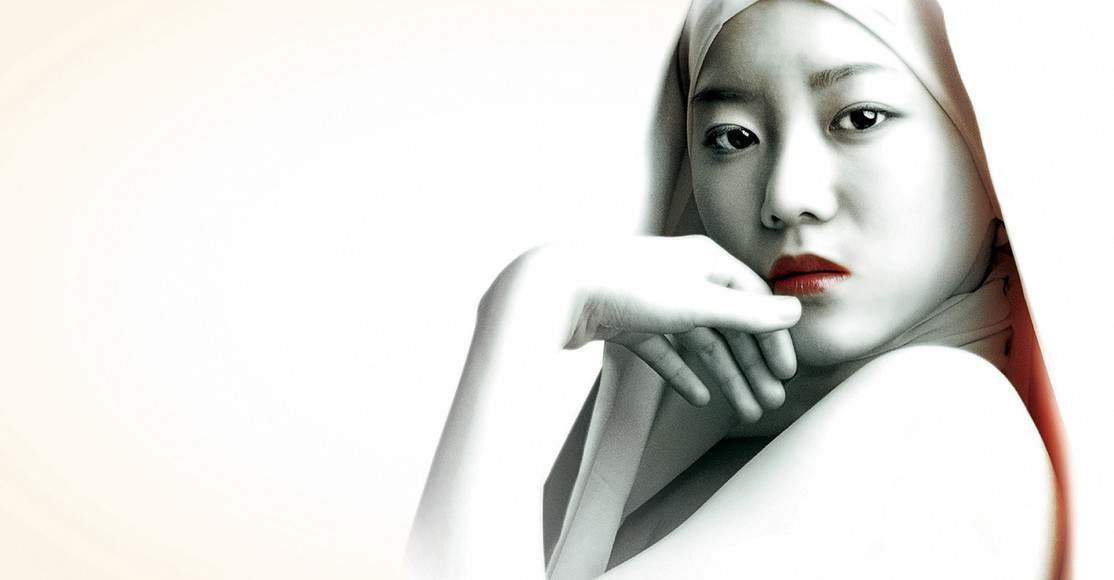Hiroyasu Ishida – Hiroyasu Ishida's 2009 short, ‘Fumiko's Confession' won the 14th Ministry of Culture's Media Arts Festival Animation Award, the 9th Tokyo Anime Award, the OIAF Student Division Special Prize and more. His 2011 graduation work, ‘Rain Town' also won many awards, including the 15th Ministry of Culture Media Arts Festival's Rookie Award. His 2013 short ‘Hinata no Aoshigure' was his first animation film.
‘Penguin Highway‘ – Aoyama, a fourth-grader, has a crush on the hygienist at his dentist's office. One day penguins appear out of nowhere in the village, and just as quickly disappear. Then he sees the hygienist throw a soda can into the air, and amazingly, it transforms into a penguin. Hiroyasu Ishida makes an impressive feature debut, bringing an award-winning novel to the screen.

The interview was conducted during the 31st Tokyo International Film Festival. The author wants to express sincere gratitude to the good offices of all the Festival crew.
There are a few very quirky and bizarre moments in your movie, starting from the arrival of the penguins, quite surprising fact since one might expect rather Japanesque animals to be the perpetrators of the whole commotion. So let me ask this very trifling question in the very beginning: why penguins?
Well, I can only imagine why Tomihiko Morimi – the author of the original story – chose penguins as the main protagonists. I guess, it's simply because everybody considers them cute. There is a need for a certain embellishment factor to the story, so as not to make it too glum or too deep for younger audience. Penguins worked just fine. I also didn't want to take any detours from the original novel, so I decided not to alter any characters. Next time, when I will be writing up my own story, I might also like to create some eccentric characters, let's say flying squirrels, for instance.

The uncanny thing is that despite the penguins' arrival, the characters – including the teachers at school – are not that shocked by their coexistence, as if it was some kind of a natural occurrence…
It was actually difficult for me to keep good balance, but I didn't want to create a world that is absolutely realistic, again being faithful to the original. Thus, people's reactions already show that we're dealing with a world that is ultimately fictional. Normally, there would be a bunch of reporters and a flood of news. There's more to the movie, which is not the quirky occurrence itself, but the awaking of the affection between Aoyama and the older girl. I wanted to concentrate myself on the depiction of that mysterious feeling, exploration of the unknown, rather than giving the story somewhat social, or even political flavor.
Like you just mentioned, ‘Penguin Highway' is rather designated for younger audience. Since the movie lasts over two hours, what do you think is the knack to make children concentrate and follow the story, so they don't get bored in the middle?
I think that characters play the key-role – so again the penguins. On the contrary, were there grandmas and grandpas talking, children would get bored easily. Apart from the animals, the children characters are constantly in high spirits, they are having a good frolic, they pick up fights, there's action in their movement. Children already laugh when sb's trying to pick up a quarrel and grabs the other person by his collar in order to pick up a fight. From an adult's perspective, it's naturally good-for-nothing.
The pivotal character – Aoyama is a teenager who acts very precocious and quite cocky, as if he knew all the angles. How do children react when they see such a kid in adult's clothing?
True, Aoyama might be rather on the impertinent and cheeky side, but on the other hand, he is also being sincere and diligent. After all, he's not doing anything improper. Should kids despise him in the beginning, then on the later stage he becomes quite a likeable person His pros and cons blend together quite well, I think.

When watching your movie, I couldn't help thinking of Tetsuya Nakashima's debut ‘Natsu jikan no otona-tachi' (‘Happy-Go-Lucky') and their similarities, not only in terms of children vivid imagination, but also the topic of reaching puberty, not to mention Aoyama's radical curiosity about woman's body…
I haven't seen the movie you just mentioned, however I can tell that curiosity is a trait of Japanese children, so they peek when they can, and it's not something that has bad influence on them – on the contrary – they learn more about the surrounding world. Even if it might be something a bit sinful, such as staring at woman's breasts, it's just part of human nature and adult female body, after all. On the contrary, thanks to the peeking experience, Aoyama managed to establish his own disposition, which might have gone awry if he hadn't been a secret observer.
It's interesting how in Europe, Japanese film for children are considered somewhat violent, sometimes even obscene. I remember when I was a kid and there was a huge discussion, whether Pokemon series should really be designated for children. Ghibli movies are still being considered to be watched by teenagers than by younger audience.
Ah, I see. As for Ghibli Studio, it varies depending on the movie – some are actually considered violent, even in Japan. However, in Japan, we depict the world as it is, without any concealment, so as to teach children that the dark side truly exists. One might consider it a culture difference.

We're heading towards the end of Heisei era and recently there has been an overall sum-up of what Japanese animation has achieved within the past twenty years. What shall the history books read from now on?
True. Works by Hayao Miyazaki, Mamoru Oshii, Satoshi Kon and others, a range of anime series… We have come a long way… I am very happy and honored that I could add my own brick to that achievements in the dawn of the Heisei era. I sometimes ask myself if one can take over the legacy they endowed us. Presently, while being dependent on the finest technology, it is quite on the contrary much more different to make creative animation. The spectrum of the above-mentioned animation film directors was different, since they were truly submerged in Showa and created their masterpieces throughout the whole Heisei era. The technology might have gone further, but the overall performance has somewhat gone down. We shall take them as role model, so as to know what to transfer to the future generations.














